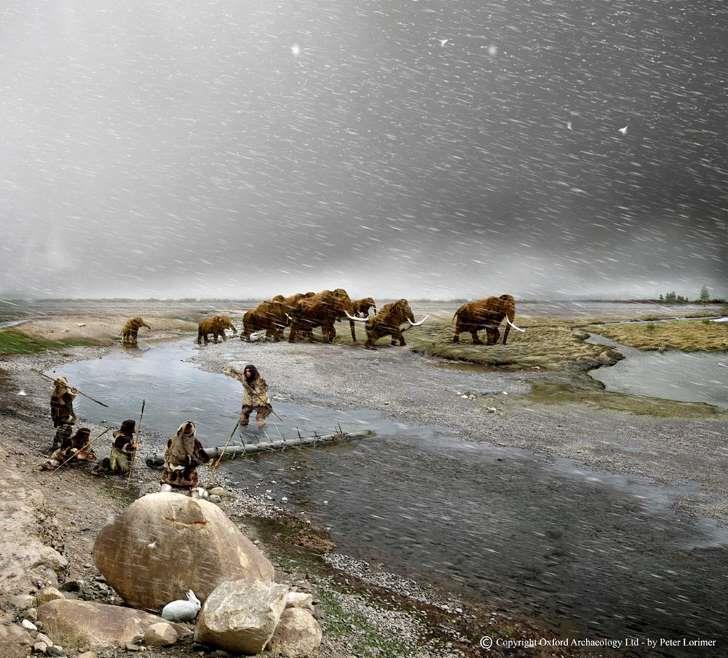




A Question OF Human Identity - Reference


Powered By Sispro1
Copyright All Rights Reserved by Nigel G Wilcox E-Mail: ngwilcox100@gmail.com
Complimentary Topics
Designed by Nigel G Wilcox
The Paragon Of Metal Detecting
& Archaeology
& Archaeology
Pages
Check out the Space Publication in the pseudo science section - Forbidden Archaeology - Introduction to The Denisovans
A more recent idea is that bipedalism first emerged in the forests, which would be consistent with the fossil record and may also have a modern-day parallel. Orangutans in Sumatra have been observed moving through the forest canopy by walking along branches on two legs while using their arms to help support their weight or hang, allowing them to move through thinner branches than would otherwise be possible.
Whatever prompted our transition from four legs to two, it seems to have happened over millions of years, probably with a long period of travelling between the ground and the trees.
So once we got the hang of walking, what happened next?
The boundary for when our ancestors started counting as human is blurry and somewhat subjective, but scientists place the starting point at species that emerged about 2.4m years ago, which are designated to the Homo genus. We are the sole survivors of this group, but the Earth was once home to a surprising diversity of humans, some of whom crossed paths with our own ancestors.
One of the earliest of these is Homo habilis, who lived in Africa between 2.4m and 1.4m years ago. The name means handyman because this species was originally thought to represent the first maker of stone tools (since then, sharpened stones, hammers and anvils dating to 3.3m years ago have been discovered). Homohabilis was short (between one and 1.4 metres or 3ft 4in - 4ft 5in) had a protruding face and massive teeth earning one fossil the nickname Nutcracker Man. His braincase was about 50% bigger than that of the Australopithicenes, but still only half as big as a modern human s.
Homo erectus, 1.7-1.8m years ago, was much closer to modern humans anatomically. He was taller (1.5 to two metres or 4ft 9in - 6ft 1in) and bigger-brained than Homo habilis and had a far smaller jaw and teeth, implying a change in diet. Harvard anthropologist Richard Wrangham argues that the striking change in jaw anatomy suggests Homo erectus mastered fire and began cooking, allowing more efficient foraging and digestion, freeing up energy to fuel a larger brain. Homo erectus has sometimes been called the first cosmopolitan, due to the impressive geographical range it spanned, with fossils found in Africa, Spain, Italy, China and Indonesia.
The earliest evidence of Homo sapiens (that s us) comes from fossils dated to just over 300,000 years ago excavated from a cave in Morocco. The bones of at least five people were found alongside tools, gazelle bones and lumps of charcoal. Jean-Jacques Hublin, a scientist at the Max Planck Institute for Evolutionary Anthropology in Leipzig who excavated the fossils, told the Guardian last year: The face of the specimen we found is the face of someone you could meet on the tube in London.
When did humans leave Africa and spread across the globe?
Until recently, converging lines of evidence from fossils, genetics and archaeology suggested that modern humans first spread from Africa into Eurasia about 60,000 years ago. However, a series of recent discoveries including a trove of 100,000-year-old human teeth found in a cave in China, and a nearly 200,000-year-old jawbone in northern Israel show that Homo sapiens was venturing across the world far earlier than once thought.
However, these early exits appear to have contributed very little to the genetics of modern day populations perhaps these groups died out or were killed off by subsequent migratory waves. By triangulating the common ancestors of modern day populations, scientists can show that the ancestors of African and non-African people alive today converge at around 60,000 years ago.
As these ancestors travelled across continents they would have encountered a motley assortment of other archaic human species, including the Neanderthals in Eurasia, the Denisovans in Siberia, possibly a dwarf species known as the hobbit (Homo floresiensis) on the Indonesian island of Flores and probably other species that we do not yet know about.
Did we kill off the Neanderthals?
Whatever prompted our transition from four legs to two, it seems to have happened over millions of years, probably with a long period of travelling between the ground and the trees.
So once we got the hang of walking, what happened next?
The boundary for when our ancestors started counting as human is blurry and somewhat subjective, but scientists place the starting point at species that emerged about 2.4m years ago, which are designated to the Homo genus. We are the sole survivors of this group, but the Earth was once home to a surprising diversity of humans, some of whom crossed paths with our own ancestors.
One of the earliest of these is Homo habilis, who lived in Africa between 2.4m and 1.4m years ago. The name means handyman because this species was originally thought to represent the first maker of stone tools (since then, sharpened stones, hammers and anvils dating to 3.3m years ago have been discovered). Homohabilis was short (between one and 1.4 metres or 3ft 4in - 4ft 5in) had a protruding face and massive teeth earning one fossil the nickname Nutcracker Man. His braincase was about 50% bigger than that of the Australopithicenes, but still only half as big as a modern human s.
Homo erectus, 1.7-1.8m years ago, was much closer to modern humans anatomically. He was taller (1.5 to two metres or 4ft 9in - 6ft 1in) and bigger-brained than Homo habilis and had a far smaller jaw and teeth, implying a change in diet. Harvard anthropologist Richard Wrangham argues that the striking change in jaw anatomy suggests Homo erectus mastered fire and began cooking, allowing more efficient foraging and digestion, freeing up energy to fuel a larger brain. Homo erectus has sometimes been called the first cosmopolitan, due to the impressive geographical range it spanned, with fossils found in Africa, Spain, Italy, China and Indonesia.
The earliest evidence of Homo sapiens (that s us) comes from fossils dated to just over 300,000 years ago excavated from a cave in Morocco. The bones of at least five people were found alongside tools, gazelle bones and lumps of charcoal. Jean-Jacques Hublin, a scientist at the Max Planck Institute for Evolutionary Anthropology in Leipzig who excavated the fossils, told the Guardian last year: The face of the specimen we found is the face of someone you could meet on the tube in London.
When did humans leave Africa and spread across the globe?
Until recently, converging lines of evidence from fossils, genetics and archaeology suggested that modern humans first spread from Africa into Eurasia about 60,000 years ago. However, a series of recent discoveries including a trove of 100,000-year-old human teeth found in a cave in China, and a nearly 200,000-year-old jawbone in northern Israel show that Homo sapiens was venturing across the world far earlier than once thought.
However, these early exits appear to have contributed very little to the genetics of modern day populations perhaps these groups died out or were killed off by subsequent migratory waves. By triangulating the common ancestors of modern day populations, scientists can show that the ancestors of African and non-African people alive today converge at around 60,000 years ago.
As these ancestors travelled across continents they would have encountered a motley assortment of other archaic human species, including the Neanderthals in Eurasia, the Denisovans in Siberia, possibly a dwarf species known as the hobbit (Homo floresiensis) on the Indonesian island of Flores and probably other species that we do not yet know about.
Did we kill off the Neanderthals?

(Early Humans pgs-6-8)
Member NCMD
Reference Menu




















